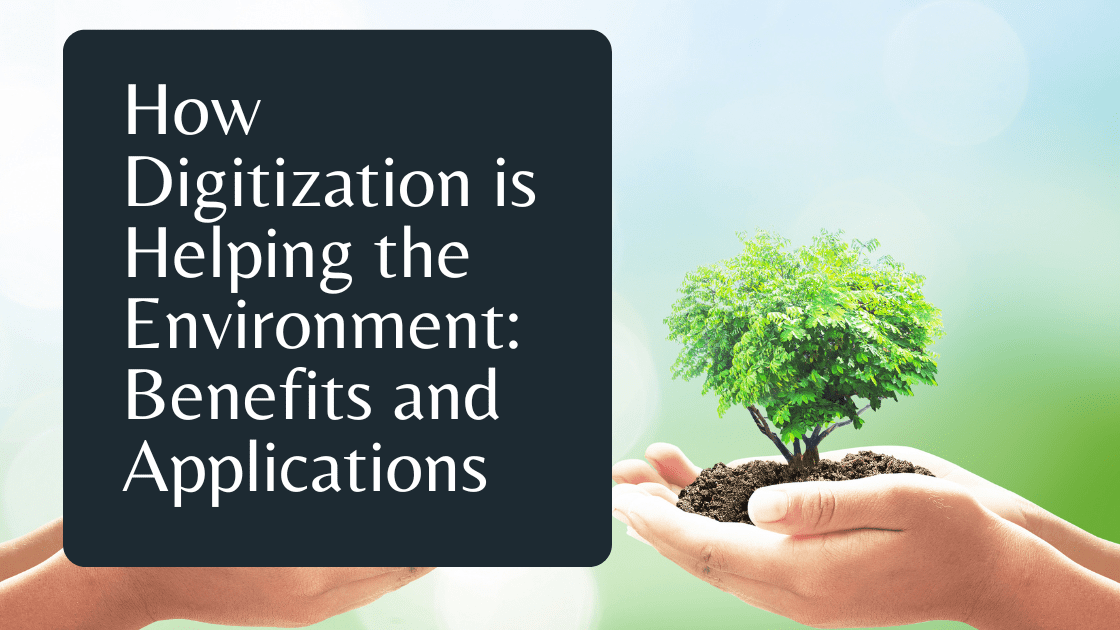As the world continues to evolve, the use of technology and digitization is increasing. Not only is digitization improving our daily lives, but it’s also helping the environment. In this blog post, we’ll explore the benefits and applications of digitization in environmental sustainability.
Benefits of Digitization in Environmental Sustainability
One of the most significant benefits of digitization in environmental sustainability is the reduction of paper usage. With the digitization of documents, there’s less of a need for paper, which means less deforestation, less energy used in paper production, and less waste. The digitization of documents has also led to a decrease in transportation emissions, as documents can be shared electronically, reducing the need for shipping and transportation.
Another benefit of digitization in environmental sustainability is the reduction in energy usage. With the rise of digital technology, energy-efficient devices have become more prevalent, reducing the amount of energy used in our daily lives. Additionally, the use of cloud computing has allowed for more efficient data storage and management, reducing the need for physical servers that consume a significant amount of energy.
Applications of Digitization in Environmental Sustainability
There are many applications of digitization in environmental sustainability. One example is the use of digital signage instead of printed signs. Digital signage not only reduces paper usage but also allows for more dynamic and engaging content that can be updated easily and quickly.
Another application of digitization in environmental sustainability is the use of smart homes and buildings. These buildings use technology to optimize energy usage, reducing energy waste and emissions. For example, smart thermostats can adjust temperature settings based on occupancy and weather, reducing energy usage when a building is empty or when the weather is mild.
Finally, the use of digital communication technologies, such as video conferencing, has reduced the need for travel, particularly for business meetings. This has led to a reduction in transportation emissions, as well as a reduction in the time and cost associated with travel.
In conclusion, digitization is not only improving our daily lives but also helping the environment. With its ability to reduce paper usage, decrease energy usage, and optimize resource management, digitization is an important tool in environmental sustainability. If you’re interested in learning more about how digitization can benefit your business or organization, contact a professional digitization service today.


0 responses to “How Digitization is Helping the Environment: Benefits and Applications”